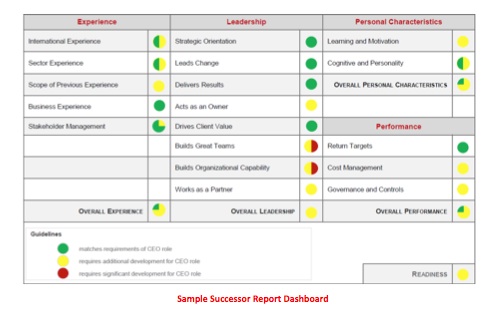
If you were asked to identify critical roles within the airline industry, which would top your list? Many might say the pilot, since they are highly skilled and must safely operate the aircraft. But what about the roles of flight attendant, bag handlers, and ticket agents? Unlike highly trained pilots with more technical duties, these other employees probably have more impact on customer satisfaction and the company’s bottom line. The customer service experience, starting with the customer’s check in to picking up their bags at the end of their trip, could either alienate a valuable frequent flyer from ever flying that airline again or lead to increased customer loyalty and a lifetime of repeat business.
As the above example illustrates, it’s not always easy for business leaders and Human Resources professionals to identify these critical roles—roles that can significantly affect an organization’s strategy, execution, customer satisfaction, and profitability. When performed well, critical roles create a long-term competitive advantage, making it essential for business leaders to ensure that the right talent and successors are in place for these critical jobs.
To identify the most critical roles within an organization, it’s important to objectively evaluate which roles have the most impact on the business’ long-term profitability. Once these positions are identified, it’s easier to build talent profiles for each role that can be used to prepare and assess potential successors.
Which Candidate Should It Be…?
To help with the profile-building process, as an example, let’s say that a large global financial services organization is looking for potential successors to one of its critical leadership roles, the chief executive officer. To build a profile or talent development model for the CEO, the organization needs to review the position and assess high-potential individuals under multiple categories, including their experience, leadership, and personal characteristics (“soft” skills).
A few benchmarks to consider include:
- Does the individual have sufficient experience, and if so, in the right environments? This global organization may prefer candidates with both domestic and international work experience, preferably in Asian markets. Candidate A, multi-lingual in Chinese, also brings a background that includes a three-year international posting in Asia and, therefore, scores better against Candidate B, who has only briefly traveled to the region and has no foreign language skills. Obviously, the more ingrained the individual with the target markets, the stronger his or her fit may be for this role.
- Does the individual’s previous experience cover the needed sectors? This global financial services organization offers everything from credit cards and consumer banking to corporate investments and venture capital. Candidate A’s experience managing a $15 billion annual revenue stream in the banking and consumer credit markets makes him initially qualified for the position, but his experience is limited to only two of four critical segments of the business, so he may need to accelerate his expertise across the other two product lines prior to becoming CEO.
- How would you characterize the individual’s strategic orientation, learning agility, and personality? Let’s say that Candidate A also excels at positioning his company for success in the Asia Pacific region by creating clear visionary plans and building solid teams. He’s also skilled at anticipating emerging trends and translating them into business strategies that support company growth. Despite this, he needs to work on becoming more charismatic and personable. Mostly driven by personal achievement and team performance, he’s historically failed to create captivating and inspiring presentations, as well as leading open dialogue for new business concepts and approaches with his peers and seniors. To succeed as CEO and effectively earn the support and buy-in of employees and stakeholders, Candidate A will need to spend more time enhancing his “soft” skills.
The above criterion represents a simplified and abbreviated version of a potential CEO succession profile. To make well-informed and successful promotion decisions, business leaders need to conduct and maintain in-depth assessments of both the position’s required skills, as well as potential internal successors. This way, the organization has a clear understanding of its needs and in-place talent assets, as well as an understanding of how individuals’ skills and characteristics compare to former successful CEOs and to one another—in the event that the CEO slot opens.

By assessing positions and potential successors, organizations can more strongly support their high-potential employees as they build accelerated succession development plans. Assessment reports help ensure that employees recognize their strengths and areas of focus to actively develop the right skill sets for the next job and preserve the organization’s ongoing success.
Michelle Bush is managing consultant and certified executive coach at The Vaya Group, a boutique talent management consultancy that applies science and precision to the art of talent assessment and development. Founded in 1997 by Dr. Paul Eccher and Dave Ross, The Vaya Group works closely with clients to understand their business operations; deliver advice; and provide tailored, quality solutions that improve productivity and profitability. The Vaya Group provides a continuum of in-depth assessment and development solutions to clients such as CitiGroup, AstraZeneca, Hewlett-Packard, and General Electric. Call 630.906.3046 or visit http://www.vayapath.com/ for more information on the company’s competency models, executive assessment, leadership development, talent analytics, and exclusive Talent Optimization Framework.



